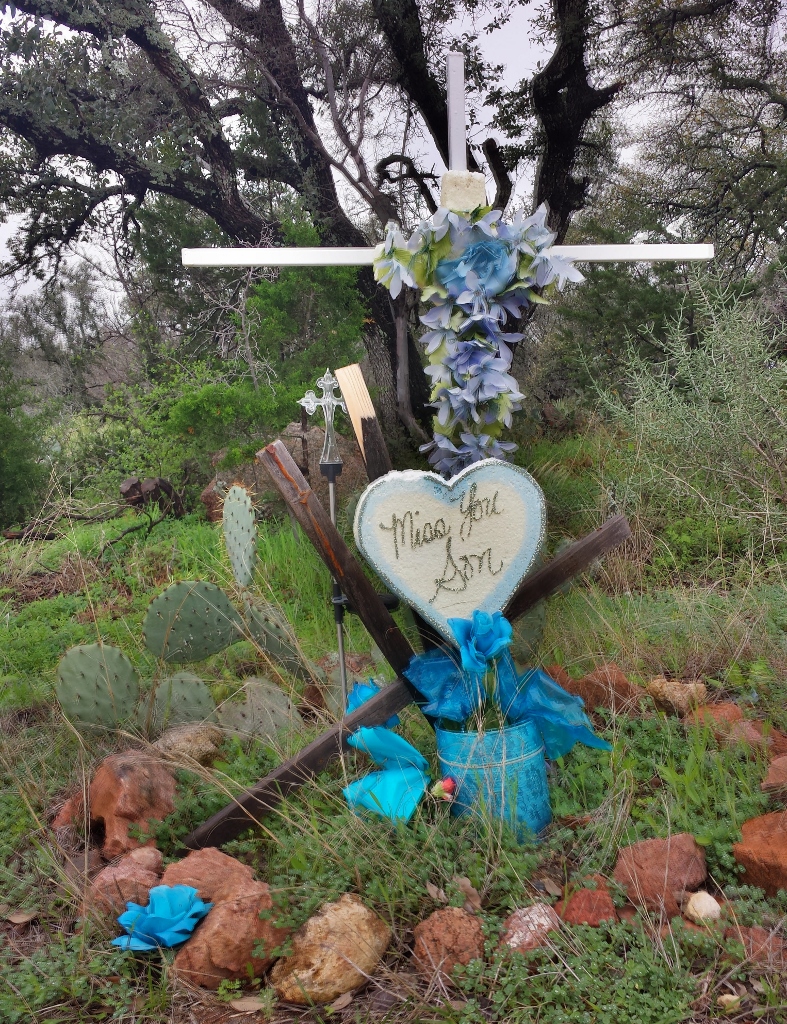Column without end, part 7
By Bart Barry–

Editor’s note: For part 6, please click here.
*
BURNET, Texas – We begin here, again, with a thought experiment of sorts, before hiking to a roadside memorial in the state Terence Crawford will visit next month, honoring Catalan masterpieces the whole way:
A tiger bursts through your door in the next instant. You react, in less than a second, far less than a second, the identical way I react, your father reacts, your worst enemy reacts. Ponder for a moment the miracle of that: Your mind takes whatever binary-like signals your eyes send it, unscrambles them in an image, queries its database – not equal to a purple balloon, not equal to a canister of whipped cream, not equal to a passenger train, not equal to an overfed chipmunk – identifies imminent peril, as opposed to banal inconvenience or pending ecstasy, and sends a non-negotiable signal to your central nervous system. In merely thousandths of a second.
Is it any wonder an entity so preternaturally capable as your mind will find tedious whatever repetitive tasks you feed it for 40 hours this week?
It wasn’t till the last fifth of my Saturday hike I came upon the sign above. What strikes hardest is its longing for connection, for touching a person who no longer exists, for having a tiny but permanent portal into the excruciating immediacy of one’s loss – to oblige one to visit what likely is a death site, beside, as it is, a winding rural highway with both a 55 mph speed limit and orange cautionary signs spaced unevenly, every half mile or so, advising of turns and bends in a plethora of alternately squiggly lines, and counseling motorists to reduce their speed by as much as 25 mph from the limit. Consider that: a roadway with a speed limit of 55 th’t one shouldn’t drive faster than 30.
There was unexpected innovation at the makeshift memorial, too; the plastic-crystal crucifix back-left of the altar had a small solar panel to collect sunrays during daylight and illuminate a cross-shaped skeleton within its structure at night. It speaks to the care that birthed the creation, the surrender its keeper gave to it: “I have lost my son. I shall take as much time as this requires. It may not be perfect, but what remained of me will be emptied in this when it is finished.”
I came upon the memorial in the fourth hour of a seven-mile hike through Inks Lake State Park’s enchanting stretch of pink granite, dark water and gnarly pecan trees, a hike that, as is its purpose, was an exploration of presence, acceleration and something that attempts to approximate the ancient Greek concept of kairos – a time, in the sense of a decisive moment, that brings a sensation of timelessness. The Greeks were no closer to understanding the phenomenon of the human mind than we are today, but they were wise enough to confess, through their juxtaposition of kronos and kairos, measurable time and something effectively infinite, th’t there was something they could paw-at and stumble upon and sense, or imagine, but never master for being unmeasurable and uncontrollable.
There are few serious belief systems that do not include the existence of something the human mind cannot measure consciously – in the sense of being able to report upon – and the factions of this belief, factions that rarely make war on one another (wars happen between people of same factions, ironically), appear to reduce to: Those who believe timelessness resides outside the human mind, in a deified form, and those who believe the mind invents it. Both are forms of faith, if we’re being honest, and the non-believer is often flummoxed by an inventory of all he perceives followed by something like “meaningless and chaotic, really?” as the believer is confounded by an assertion, Bishop Berkeley’s practically, you never awoke last night and everything you are perceiving at this moment, to include a “boxing” column telling you about timelessness and hiking in Texas, written by a person who never existed outside your imagination, is but a dream.
Oh where were we? Terrance “Bud” Crawford, that’s right.
As some of you may already know, and I am happy to confess I did not until Sunday morning, last year’s BWAA Fighter of the Year is coming to Texas in a month’s time, fighting on a University of Texas campus in Arlington on April 18. Crawford is one of the few fighters plying the craft today who merits travel – which distinguishes him completely from the man who will share headlines on the digital continuum that same evening, “Son of the Legend” Julio Cesar Chavez Jr. It is not enough to impart I will drive more than four hours northwards to honor Crawford’s spirit and achievement; I would not watch Chavez’s next fight if it were being push-streamed by 15rounds.com to a phone cradled in the cleavage of my favorite porn actress.
What does any of this have to do with the Catalan master Antoni Gaudi? A pursuit of beauty in the form of spires, columns if you will, leavened by an ecstatic willingness to fail so long as one gets it true – not right, no, not right: True. What art does that makes it functional as meditation or prayer or alpine skiing or fighting or even hiking in Inks Lake State Park is allow its participants a brief interaction with their sense of timelessness, a blessed respite from our learned accountancy of the seconds-hand on Life’s clock . . .
*
Editor’s note: For part eight, please click here.
*
Bart Barry can be reached via Twitter @bartbarry